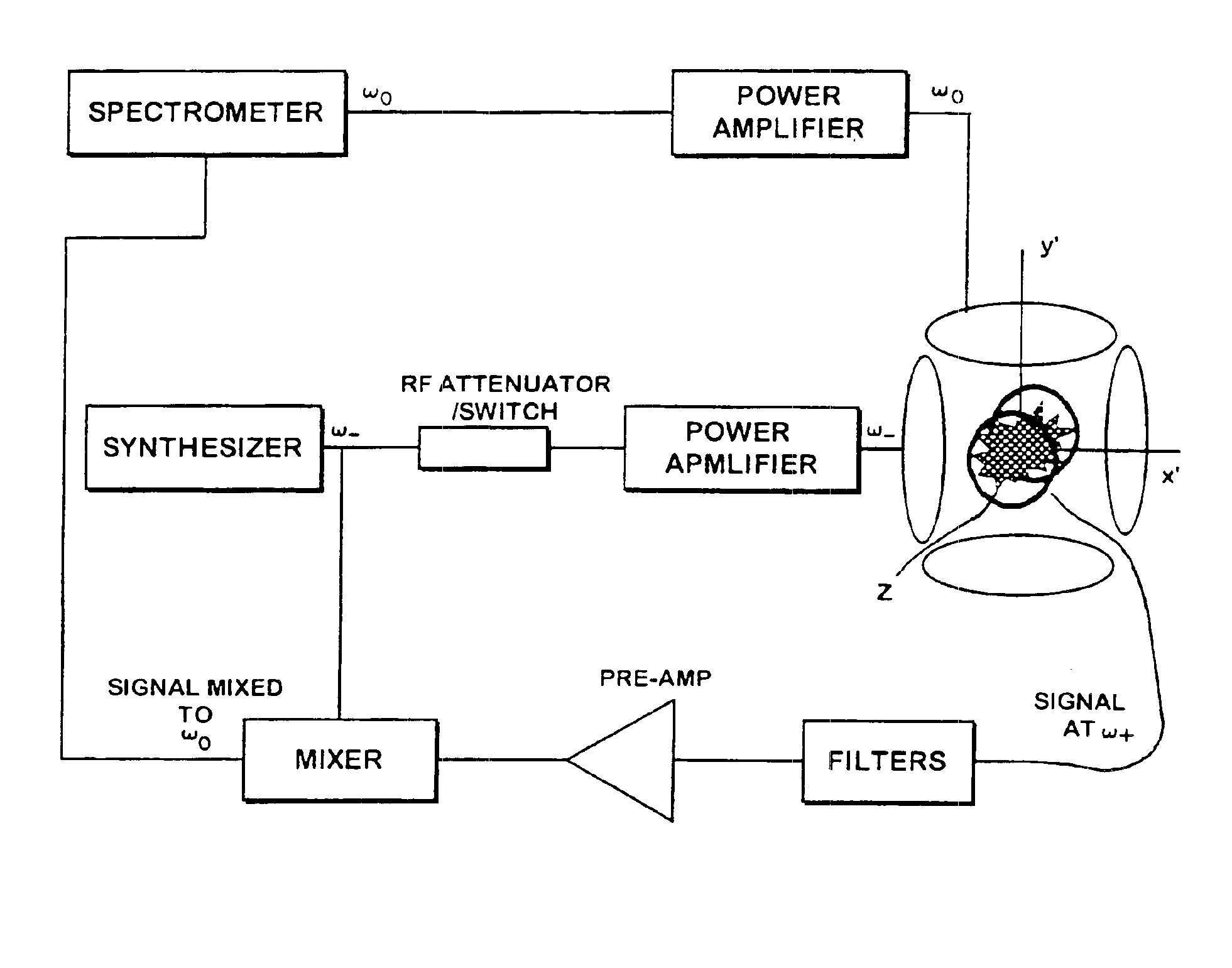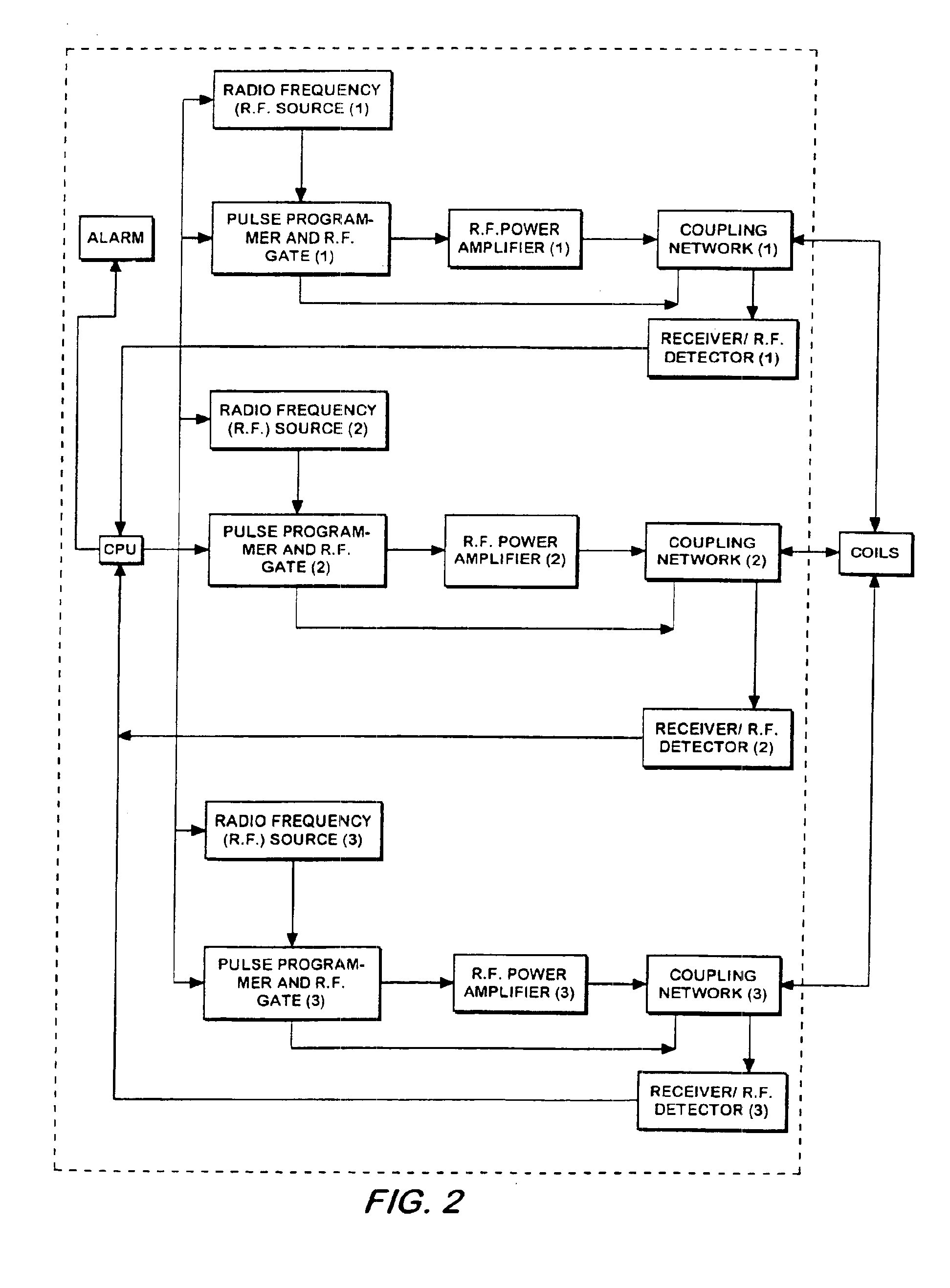Substance detection by nuclear quardrupole resonance using at least two different excitation frequencies
a quardrupole resonance and excitation frequency technology, applied in the field of nuclear quadrupole resonance, can solve the problems of forbidden excitation transition and not directly observed at its own frequency, and achieve the effect of avoiding interferen
- Summary
- Abstract
- Description
- Claims
- Application Information
AI Technical Summary
Benefits of technology
Problems solved by technology
Method used
Image
Examples
examples
[0049]The experiment was carried out using 14N nuclei in a powder sample of sodium nitrite, NaNO2, at room temperature. Given sodium nitrite's asymmetry parameter of η=0.379, the level spacing is unequal and the transition frequencies are distinct (ω+ / 2π=4.64 MHz, ω− / 2π=3.60 MHz, and ω0 / 2π=1.04 MHz). The 8 gm sample was placed at the center of a probe having three mutually orthogonal pairs of coils (see FIG. 3). RF pulses at ω0 were produced by a Tecmag spectrometer, suitably amplified, and coupled into a Helmholtz coil oriented along y′, RF pulses at ω− were produced by a frequency generator and coupled to a Helmholtz coil oriented along x′, and the third pair of coils oriented along z′ was used to detect the signal at ω+. The strengths of the RF magnetic fields were measured using a small pick-up coil; B1s as large as 2 mT were used for this experiment. It was shown that indirect mixing of the frequencies resulted in only a negligible RF pulse at ω+(B1+<1 μT).
[0050]Each set of coi...
PUM
 Login to View More
Login to View More Abstract
Description
Claims
Application Information
 Login to View More
Login to View More - R&D
- Intellectual Property
- Life Sciences
- Materials
- Tech Scout
- Unparalleled Data Quality
- Higher Quality Content
- 60% Fewer Hallucinations
Browse by: Latest US Patents, China's latest patents, Technical Efficacy Thesaurus, Application Domain, Technology Topic, Popular Technical Reports.
© 2025 PatSnap. All rights reserved.Legal|Privacy policy|Modern Slavery Act Transparency Statement|Sitemap|About US| Contact US: help@patsnap.com



